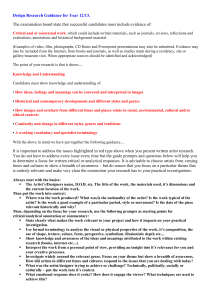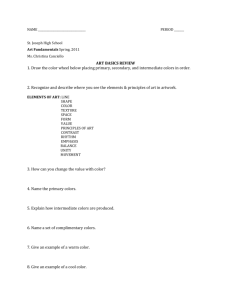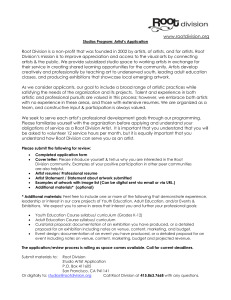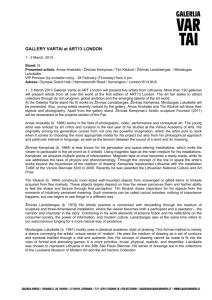Drawing-handout-no.2
advertisement
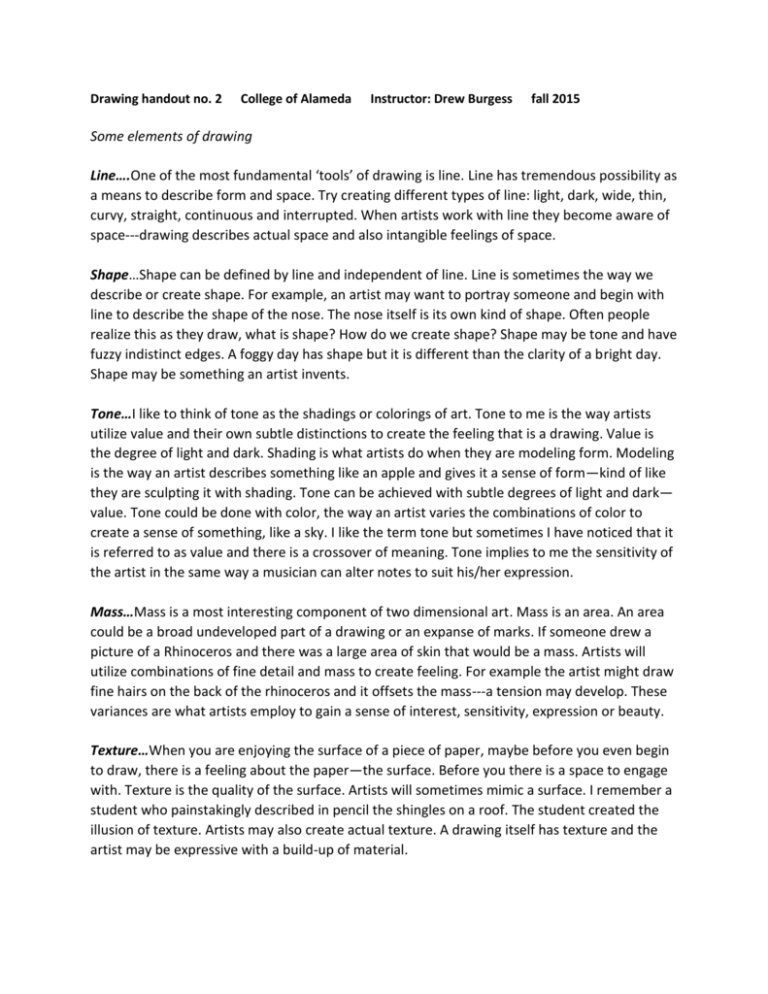
Drawing handout no. 2 College of Alameda Instructor: Drew Burgess fall 2015 Some elements of drawing Line….One of the most fundamental ‘tools’ of drawing is line. Line has tremendous possibility as a means to describe form and space. Try creating different types of line: light, dark, wide, thin, curvy, straight, continuous and interrupted. When artists work with line they become aware of space---drawing describes actual space and also intangible feelings of space. Shape…Shape can be defined by line and independent of line. Line is sometimes the way we describe or create shape. For example, an artist may want to portray someone and begin with line to describe the shape of the nose. The nose itself is its own kind of shape. Often people realize this as they draw, what is shape? How do we create shape? Shape may be tone and have fuzzy indistinct edges. A foggy day has shape but it is different than the clarity of a bright day. Shape may be something an artist invents. Tone…I like to think of tone as the shadings or colorings of art. Tone to me is the way artists utilize value and their own subtle distinctions to create the feeling that is a drawing. Value is the degree of light and dark. Shading is what artists do when they are modeling form. Modeling is the way an artist describes something like an apple and gives it a sense of form—kind of like they are sculpting it with shading. Tone can be achieved with subtle degrees of light and dark— value. Tone could be done with color, the way an artist varies the combinations of color to create a sense of something, like a sky. I like the term tone but sometimes I have noticed that it is referred to as value and there is a crossover of meaning. Tone implies to me the sensitivity of the artist in the same way a musician can alter notes to suit his/her expression. Mass…Mass is a most interesting component of two dimensional art. Mass is an area. An area could be a broad undeveloped part of a drawing or an expanse of marks. If someone drew a picture of a Rhinoceros and there was a large area of skin that would be a mass. Artists will utilize combinations of fine detail and mass to create feeling. For example the artist might draw fine hairs on the back of the rhinoceros and it offsets the mass---a tension may develop. These variances are what artists employ to gain a sense of interest, sensitivity, expression or beauty. Texture…When you are enjoying the surface of a piece of paper, maybe before you even begin to draw, there is a feeling about the paper—the surface. Before you there is a space to engage with. Texture is the quality of the surface. Artists will sometimes mimic a surface. I remember a student who painstakingly described in pencil the shingles on a roof. The student created the illusion of texture. Artists may also create actual texture. A drawing itself has texture and the artist may be expressive with a build-up of material.


